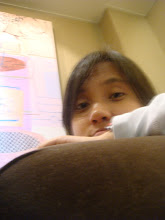For this activity, we were able to explore different morphological operators and functions. Morphological operations were applied to five objects, namely: circle, square, hollow square, cross and triangle.
For the first part, the five images were eroded using four different structuring element. The first is a 4 X 4 ones, followed by 2 x 2 ones, 4 x 2 ones and lastly a cross that is 5 pixel long and a pixel thick.

SE = 2 x 2 ones

SE = 4 x 2 ones
 SE = cross
SE = cross
As can be observed in the obtained dilated and eroded images, dilation pads-up the object depending on the dimensions of the structuring element used. On the contrary, erosion erodes the image as dictated by again the structuring element.
Before programming the erosion and dilation of the objects used, we were first asked to predict the results. Almost all of the predicted results for the dilation and erosion of images were the same as the results when programmed.
Other morphological operations like skel and thin were also explored.
 The first column of the image above is the image original image, the second is the image after applying the function skel and lastly in the third column is the image after applying thin. The skel function skeletonizes the image. The thin function is also the same as the skel, however the method in which it thins the object is different to that of scale. As can be observed in the image above, the result of the skel is better than that of the thin function. Discontinuities are present in the thin function.
The first column of the image above is the image original image, the second is the image after applying the function skel and lastly in the third column is the image after applying thin. The skel function skeletonizes the image. The thin function is also the same as the skel, however the method in which it thins the object is different to that of scale. As can be observed in the image above, the result of the skel is better than that of the thin function. Discontinuities are present in the thin function.For this activity, I give myself a grade of 9 for I was able to do all the required tasks. However I was not able to fully discuss the process of morphology.
I thank Ms Herminia Balgos for discussing with me this activity.





No comments:
Post a Comment